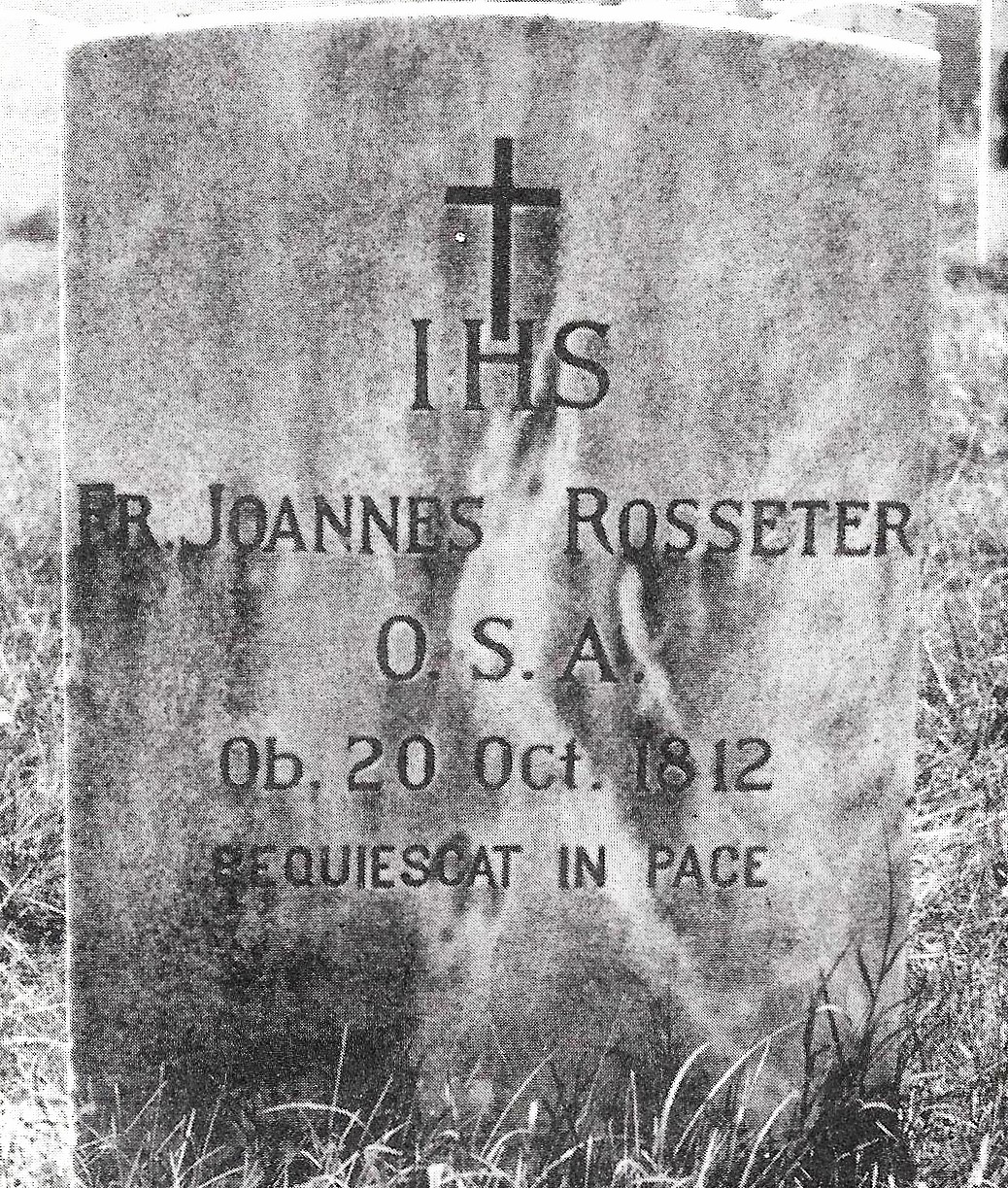1751 – 1812 (October 20)
John Rosseter was born in Wexford, Ireland on February 23, 1751, the son of Patrick Rosseter and Margaret Bent. He studied for the priesthood in the Irish Seminary of Louvain, and was ordained for the diocese of Ferns. Within a short time he was named pastor in Enniscorthy, a post he held for four years. In 1783 he resigned his pastorate, entered the Augustinian novitiate in Dublin and made his profession on May 31, 1784. He was then assigned to the community at New Ross, where he spent the next ten years, with a two year hiatus as formation director at the Irish College in Rome during that period.
In 1794, Father Rosseter came to the United States where, with Father Michael Ennis, a diocesan priest of Wexford, he entered the missionary services under the jurisdiction of Bishop Carroll. For some years, he lived at Coffee Run in Delaware and directed the building of the Church. From there he also attended the country missions, as well as one in West Chester, Pennsylvania.
In 1796, he worked with Father Carr at Saint Joseph’s in Philadelphia. In this same year, he, Father Carr and others initiated moves for the foundation of a new province. In 1796, while stationed at Saint Mary’s in Philadelphia, he and Father Carr purchased the first ground for Saint Augustine’s Church in Philadelphia. And when Saint Augustine’s was opened in September 1801, Father Rosseter was made the rector of Saint Mary’s and superior of old Saint Joseph’s, offices he held until 1808 when Father Michael Egan was named the first Bishop of Philadelphia.
Father Rosseter’s health began to fail in 1804. However, he was very active in administering the Sacraments during the Yellow Fever Plague in 1805. In 1811, his ill health forced him to retire to the Saint Thomas Manor in Saint Charles’ County, Maryland. He died there at the age of 61 on October 20, 1812, and is buried in the cemetery there.
Father Rosseter can be considered the Augustinian pioneer in the American Augustinian mission, having arrived two years before Father Matthew Carr, with the intention of starting an Augustinian foundation. It would be Father Carr, however, who would significantly help it to become a reality.

